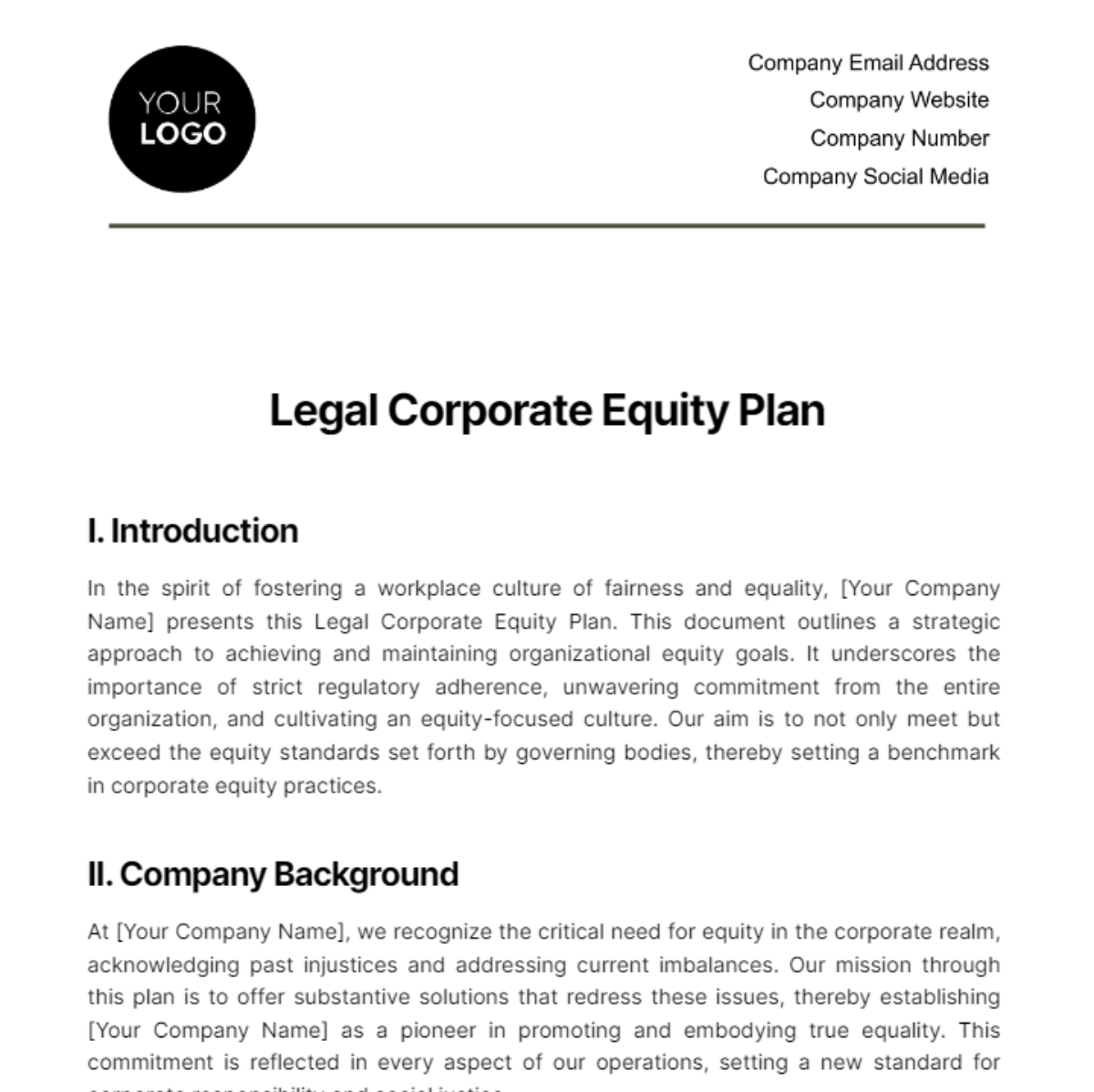Legal Client Service Restructuring Plan
A. Executive Summary
The aim of the Legal Client Service Restructuring Plan is to significantly improve the quality of the legal services that are being provided to clients. This ambition directly addresses the deficiencies apparent in the existing structure and actively seeks out opportunities for improvement. One of the primary strategies employed by the plan is the realignment of resources, which includes the personnel, budget, and the use of technology, all geared towards effectively supporting the objectives laid out in the restructuring plan.
To ensure that the plan is efficiently achieving its goals within the stipulated timeline, it has been ensured that robust measures for risk management are in place. Additionally, a system of continual evaluation has been implemented to regularly assess the progress of the plan and make the necessary adjustments whenever required. This thorough plan, with its solid risk management and evaluation strategies, serves to ensure that the objectives of improving the provision of legal services are met.
B. Introduction
The necessity for the process of restructuring primarily arises from the intensified expectations of our clients coupled with an intensely competitive scenario in the legal market. This particular circumstance has led us to devise a comprehensive plan that aims to cater to these needs. The main objective of this strategy is to offer supreme quality and client-focused legal services that are not commonly found in the market.
By focusing on these aspects, it becomes evident that our legal services will be unique in the market and will stand out from the rest. Ultimately, we hope that this approach will lead to an increase in the loyalty of our clients towards our services, and in turn, promote the profitability of our firm. The desired outcome is creating a win-win situation where both our clients and the firm will benefit.
C. Current State Assessment
Before embarking on any restructuring efforts, it's crucial to conduct a comprehensive assessment of the current state of our legal client services. Our SWOT analysis sheds light on key areas of strength, weakness, opportunity, and threat, guiding our strategic planning process. The table below summarizes our findings:
Aspect | Findings |
|---|---|
Strengths |
|
Weaknesses |
|
Opportunities |
|
Threats |
|
D. Client Needs Analysis
Client feedback indicates they prefer quicker response times and better accessibility to legal advice. They have expressed the need for a more straightforward communication channel for real-time updates. This feedback will pave the way for considerable service improvements.
E. Market Analysis
The legal market is teeming with firms offering similar services but with agile delivery mechanisms. Many have embraced technology for client interaction and service delivery. In such a landscape, staying competitive demands radical changes in our service structure.
F. Proposed Changes and Strategies
In response to the findings of our current state assessment, we have developed a set of proactive strategies aimed at enhancing the delivery of our legal client services. The following initiatives outline our proposed changes and strategies to address identified weaknesses and capitalize on opportunities:
We intend to enhance our service delivery through the following:
Improving our communication platforms for quicker response times.
Implementing technology for effective case management.
Streamlining internal processes for improved efficiency.
Offering client-specific value-added services.
Investing in personnel training to enhance the client interaction experience.
G. Resource Allocation
Effective resource allocation is essential for supporting the implementation of our proposed changes and strategies. By carefully allocating our budget, personnel, and technology resources, we can ensure that we have the necessary support to drive forward our initiatives and achieve our goals.
Implementing the changes require a significant investment in resources:
Resource | Allocation |
|---|---|
Budget | 40% of annual budget |
Personnel | Investment in training and hiring |
Technology | 20% of annual budget |
H. Timeline and Milestones
As we embark on our journey to enhance our legal client services, it's essential to establish a clear timeline and identify key milestones to track our progress. The table below outlines the proposed timeline for implementing our changes and achieving significant milestones over an 18-month period:
Quarter | Milestones |
|---|---|
Q1 | Launch of new communication platforms |
Q2 | Full technology implementation |
Q3 | Streamlined operations |
Q4 | Commencement of value-added services |
I. Risk Management Plan
Anticipating and mitigating potential risks is critical to the success of our restructuring efforts. By identifying key risks and implementing proactive measures, we can minimize their impact on our objectives. The table below summarizes the risks we've identified and our corresponding risk mitigation strategies:
Risk | Column 2 |
|---|---|
Resistance to Change | Institute change management programs to facilitate adoption. |
Technology Integration Failures | Engage a reliable tech partner to ensure smooth integration. |
Budget Overruns | Implement a robust monitoring mechanism to control budget allocation. |
J. Measurement and Evaluation
To ensure the effectiveness of our Legal Client Service Restructuring Plan, we'll regularly evaluate our progress using Key Performance Indicators (KPIs). This section outlines the KPIs we'll track, including client satisfaction scores, client retention rates, response turnaround time, and profit margins. The accompanying pie chart visualizes the distribution of client satisfaction levels based on hypothetical data.
Regular assessment of Key Performance Indicators (KPIs) such as client satisfaction scores, retention rates, response times, and profit margins is crucial for gauging the effectiveness of our restructuring efforts.


















